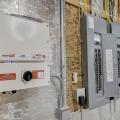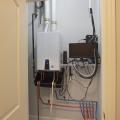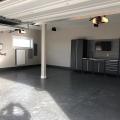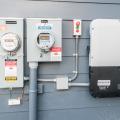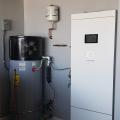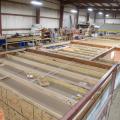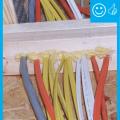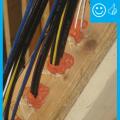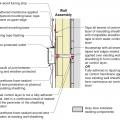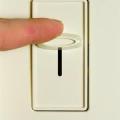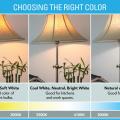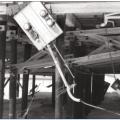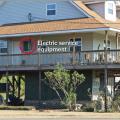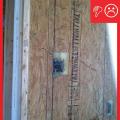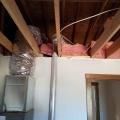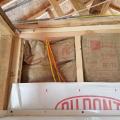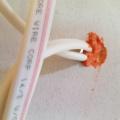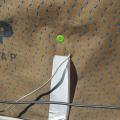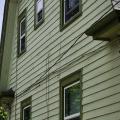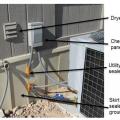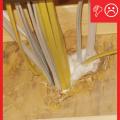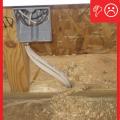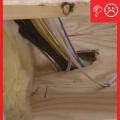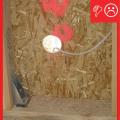Showing results 51 - 89 of 89
Right – The builder provided adequate wall space for the solar inverter next to the home’s electric panels.
Right – The home’s energy management system is installed in a utility closet next to the tankless water heater.
Right – The PV system inverters and battery take up minimal space in the garage.
Right – The solar system production is tracked next to the home’s electrical meter.
Right – This home solar system includes batteries that provide power during peak evening hours.
Right – This net zero energy home has an electric vehicle charging station in the carport.
Right – Walls, windows, and wiring are installed in the factory for these modular homes, which are installed at the site on basement foundations made of insulated concrete wall panels.
Section view of electric box installation in exterior wall showing flashing and air sealing details
Solar electric panels provide electricity for the home and an electric car charging station.
The ability to choose a light color range allows one to customize the lighting of any space
This home is equipped with two electric vehicle chargers conveniently located in the garage.
To minimize air leakage through electrical boxes, the boxes were either wrapped with fire-resistant putty (required at fire-rated walls) or wire penetrations were foamed and the boxes were caulked to the drywall.
Wall space is provided next to the electrical panel in the garage for the home’s photovoltaics system.
When wiring is installed in ICF walls, openings made for wire runs should be air-sealed with caulk.
Wrong - Hole around electrical box is cut too large; gap needs to be air-sealed.
Wrong - HVAC duct and flue are too close to wall and will be difficult to properly air seal and insulate around when ceiling is installed.
Wrong - Tape is not well adhered to house wrap and wiring penetration is not sealed.
Wrong - This is a poorly sealed chase with no solid air barriers along the sides of the chase and no caulk around the electrical wires installed through the ceiling of the chase.
Wrong - Wiring holes are not sealed and possible missing flashing around windows is allowing water into walls and causing paint to peel.
Wrong – Check and seal all rodent entry points, electrical, plumbing, and vents; hardware cloth is better than foam, which rodents can chew through
Wrong – Fibrous insulation is not an air barrier and cannot be used for sealing holes.
Wrong – Holes have been cut larger than needed, making them difficult to air-seal.
Wrong: Electrical components were installed near ground level and are likely to be flood damaged.
